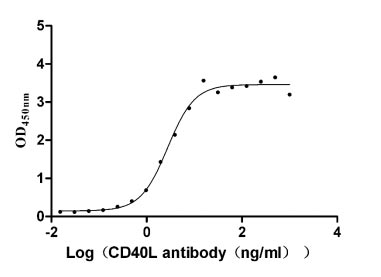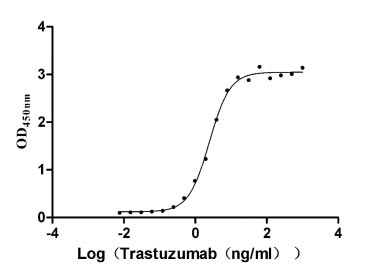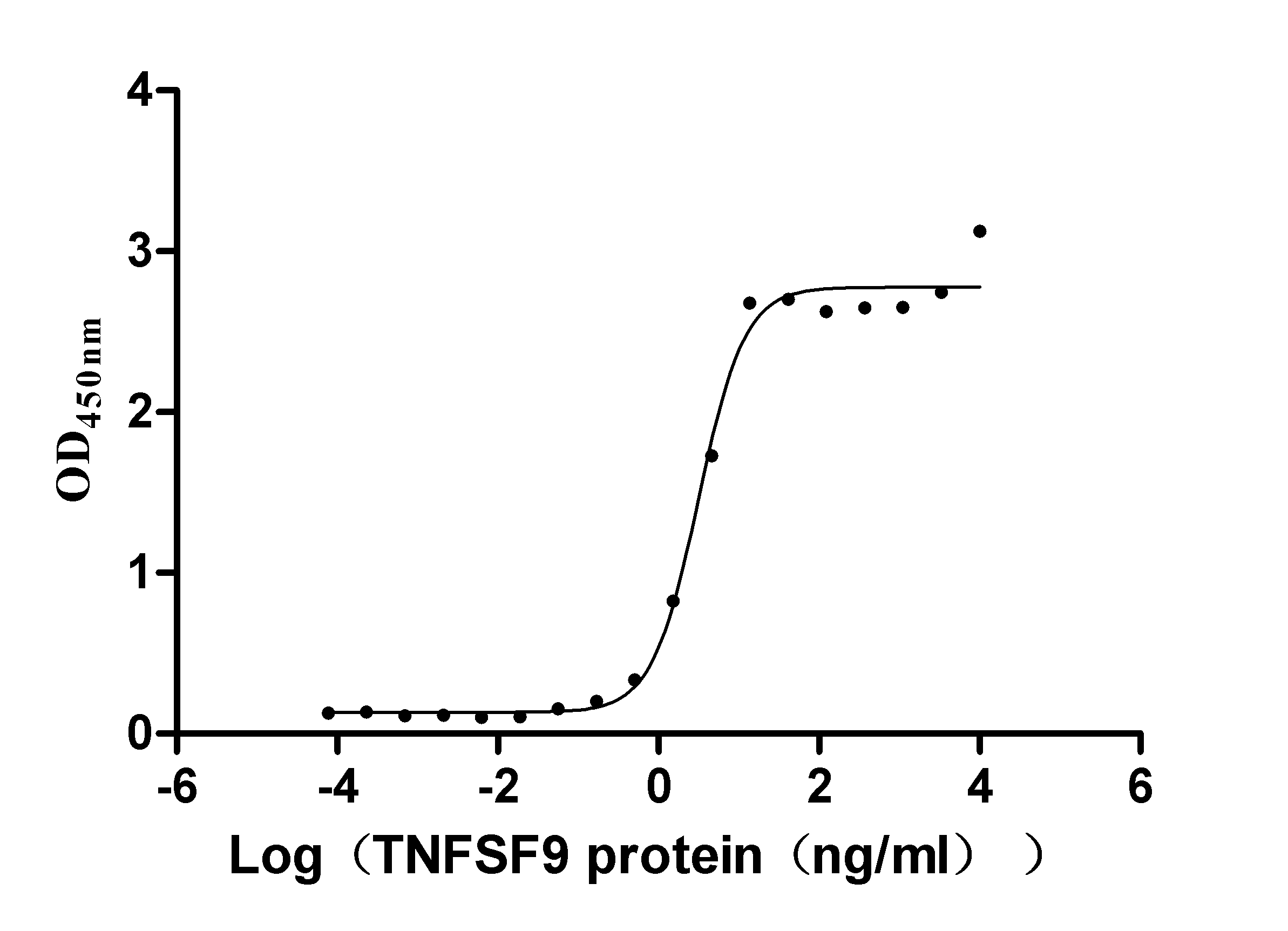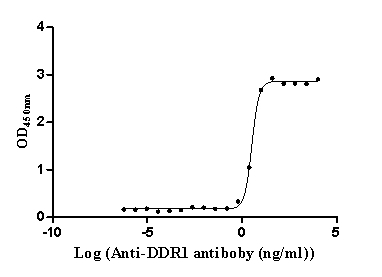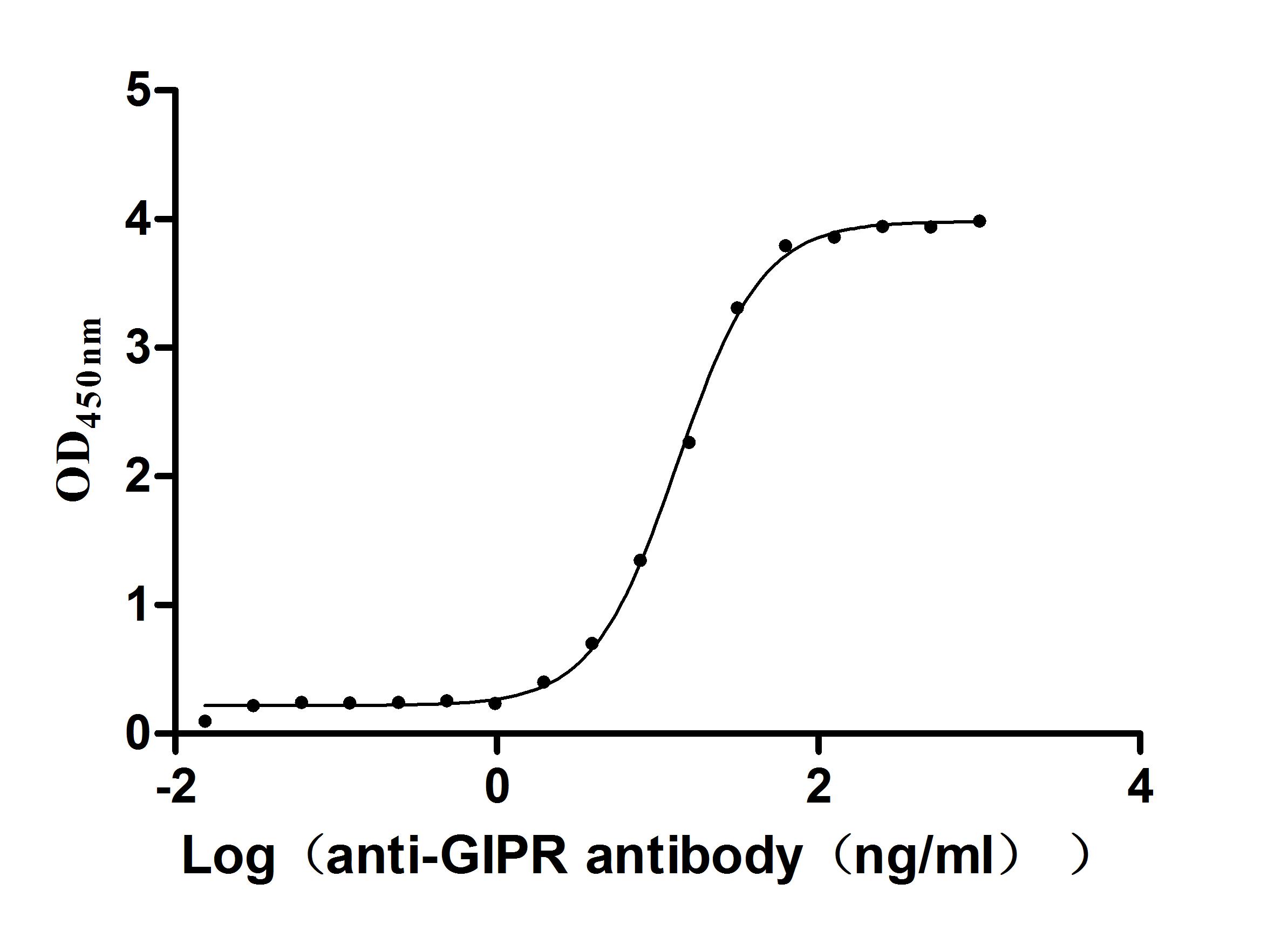Recombinant Human Optic atrophy 3 protein (OPA3)
-
中文名称:人OPA3重组蛋白
-
货号:CSB-YP880985HU
-
规格:
-
来源:Yeast
-
其他:
-
中文名称:人OPA3重组蛋白
-
货号:CSB-EP880985HU
-
规格:
-
来源:E.coli
-
其他:
-
中文名称:人OPA3重组蛋白
-
货号:CSB-EP880985HU-B
-
规格:
-
来源:E.coli
-
共轭:Avi-tag Biotinylated
E. coli biotin ligase (BirA) is highly specific in covalently attaching biotin to the 15 amino acid AviTag peptide. This recombinant protein was biotinylated in vivo by AviTag-BirA technology, which method is BriA catalyzes amide linkage between the biotin and the specific lysine of the AviTag.
-
其他:
-
中文名称:人OPA3重组蛋白
-
货号:CSB-BP880985HU
-
规格:
-
来源:Baculovirus
-
其他:
-
中文名称:人OPA3重组蛋白
-
货号:CSB-MP880985HU
-
规格:
-
来源:Mammalian cell
-
其他:
产品详情
-
纯度:>85% (SDS-PAGE)
-
基因名:OPA3
-
Uniprot No.:
-
别名:OPA3; Optic atrophy 3 protein
-
种属:Homo sapiens (Human)
-
蛋白长度:full length protein
-
表达区域:1-179
-
氨基酸序列MVVGAFPMAK LLYLGIRQVS KPLANRIKEA ARRSEFFKTY ICLPPAQLYH WVEMRTKMRI MGFRGTVIKP LNEEAAAELG AELLGEATIF IVGGGCLVLE YWRHQAQQRH KEEEQRAAWN ALRDEVGHLA LALEALQAQV QAAPPQGALE ELRTELQEVR AQLCNPGRSA SHAVPASKK
-
蛋白标签:Tag type will be determined during the manufacturing process.
The tag type will be determined during production process. If you have specified tag type, please tell us and we will develop the specified tag preferentially. -
产品提供形式:Lyophilized powder
Note: We will preferentially ship the format that we have in stock, however, if you have any special requirement for the format, please remark your requirement when placing the order, we will prepare according to your demand. -
复溶:We recommend that this vial be briefly centrifuged prior to opening to bring the contents to the bottom. Please reconstitute protein in deionized sterile water to a concentration of 0.1-1.0 mg/mL.We recommend to add 5-50% of glycerol (final concentration) and aliquot for long-term storage at -20℃/-80℃. Our default final concentration of glycerol is 50%. Customers could use it as reference.
-
储存条件:Store at -20°C/-80°C upon receipt, aliquoting is necessary for mutiple use. Avoid repeated freeze-thaw cycles.
-
保质期:The shelf life is related to many factors, storage state, buffer ingredients, storage temperature and the stability of the protein itself.
Generally, the shelf life of liquid form is 6 months at -20°C/-80°C. The shelf life of lyophilized form is 12 months at -20°C/-80°C. -
货期:Delivery time may differ from different purchasing way or location, please kindly consult your local distributors for specific delivery time.Note: All of our proteins are default shipped with normal blue ice packs, if you request to ship with dry ice, please communicate with us in advance and extra fees will be charged.
-
注意事项:Repeated freezing and thawing is not recommended. Store working aliquots at 4°C for up to one week.
-
Datasheet :Please contact us to get it.
相关产品
靶点详情
-
功能:May play some role in mitochondrial processes.
-
基因功能参考文献:
- Mutations of the OPA3 gene can cause either autosomal dominant or autosomal recessive optic atrophy. PMID: 25205859
- Report the results of a comprehensive study on OPA3 mutations, including the mutation spectrum and its prevalence in a large cohort of ADOA patients, the associated clinical phenotype and the functional characterisation of a newly identified OPA3 mutant. PMID: 24136862
- A novel missense mutation identifies OPA3 as the cause of a complex neurological disorder with marked lower limb dystonia. PMID: 23700088
- OPA1 mutations are the most common genetic defects identified in patients with suspected Autosomal-dominant optic atrophy (DOA), whereas OPA3 mutations are very rare in isolated optic atrophy cases. PMID: 21036400
- OPA3, as an integral mitochondrial outer membane perotein, has a crucial role in mitochondrial fission, and provides a direct link between mitochondrial morphology and optic atrophy. PMID: 20372962
- findings thus place the cellular metabolic defect of 3-methylglutaconic aciduria type III in the mitochondrion rather than the peroxisome and implicate loss of OPA3A rather than gain of OPA3B in disease etiology. PMID: 20350831
- two missense mutations in OPA3 in two families affected by autosomal dominant optic atrophy and cataract (ADOAC) PMID: 15342707
- patient with Costeff syndrome presenting the characteristics of this syndrome and the single-nucleotide polymorphic gene that causes this disease. PMID: 16838891
- OPA1 mutations, mtDNA mutations, and OPA3 mutations in 980 patients Leber's hereditary optic neuropathy and autosomal dominant optic atrophy PMID: 19319978
- The mouse ortholog of OPA3 purifies with mitochondrial inner membranes. PMID: 12865426
- The mouse ortholog of OPA3 purifies with mitochondria PMID: 18614015
- type III 3-methylglutaconic aciduria (optic atrophy plus syndrome, or Costeff optic atrophy syndrome): identification of the OPA3 gene and its founder mutation in Iraqi Jews PMID: 11668429
显示更多
收起更多
-
相关疾病:3-methylglutaconic aciduria 3 (MGA3); Optic atrophy 3 (OPA3)
-
亚细胞定位:Mitochondrion.
-
蛋白家族:OPA3 family
-
组织特异性:Ubiquitous. Most prominent expression in skeletal muscle and kidney.
-
数据库链接:
HGNC: 8142
OMIM: 165300
KEGG: hsa:80207
UniGene: Hs.466945
Most popular with customers
-
Recombinant Human CD40 ligand (CD40LG), partial (Active)
Express system: Mammalian cell
Species: Homo sapiens (Human)
-
Recombinant Human Receptor tyrosine-protein kinase erbB-2 (ERBB2), partial (Active)
Express system: Mammalian cell
Species: Homo sapiens (Human)
-
Recombinant Human Tumor necrosis factor ligand superfamily member 9 (TNFSF9), partial (Active)
Express system: Mammalian cell
Species: Homo sapiens (Human)
-
Recombinant Human IGF-like family receptor 1 (IGFLR1), partial (Active)
Express system: Mammalian cell
Species: Homo sapiens (Human)
-
Recombinant Human Epithelial discoidin domain-containing receptor 1 (DDR1), partial (Active)
Express system: Mammalian cell
Species: Homo sapiens (Human)
-
Recombinant Macaca fascicularis Membrane spanning 4-domains A1 (MS4A1)-VLPs (Active)
Express system: Mammalian cell
Species: Macaca fascicularis (Crab-eating macaque) (Cynomolgus monkey)
-
Recombinant Human Myosin regulatory light chain 12A (MYL12A) (Active)
Express system: E.coli
Species: Homo sapiens (Human)
-
Recombinant Macaca Gastric inhibitory polypeptide receptor(GIPR), partial (Active)
Express system: yeast
Species: Macaca fascicularis (Crab-eating macaque) (Cynomolgus monkey)


